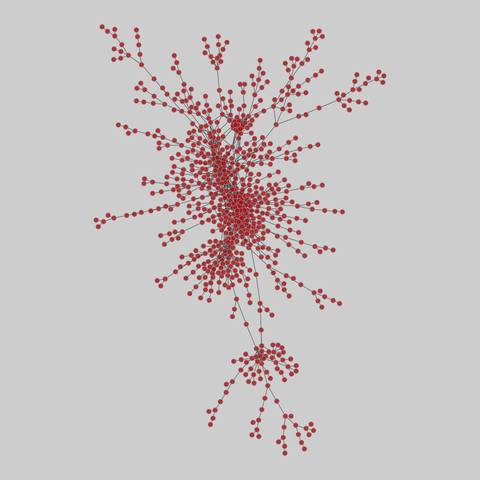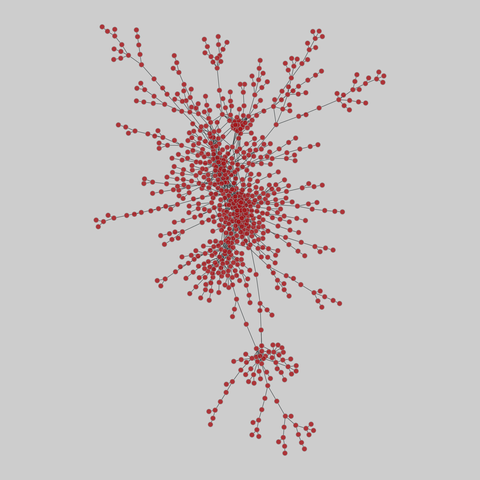2025-06-12 11:00:16
qa_user: User interactions on Q&A websites (2016)
Networks of interactions among users from four online Q&A sites: Stack Overflow, Math Overflow, Super User, and Ask Ubuntu. A directed edge (i,j) indicates a user i responded to user j's post. Edges are timestamped. For each Q&A site, four differently defined networks are provided, based on the definition of an edge: (i) a user answered a question, (ii) a user commented on a question, (iii) a user commented on an answer…
2025-05-11 13:16:51
Next stop in our NLP timeline is 2013, the introduction of low dimensional dense word vectors - so-called "word embeddings" - based on distributed semantics, as e.g. word2vec by Mikolov et al. from Google, which enabled representation learning on text.
T. Mikolov et al. (2013). Efficient Estimation of Word Representations in Vector Space.
…
2025-06-13 09:26:00
On the interplay between the BFKL resummation and high-energy factorization in Mueller-Navelet dijet production
A. A. Chernyshev, M. A. Nefedov, V. A. Saleev
https://arxiv.org/abs/2506.10458
2025-06-14 02:00:20
qa_user: User interactions on Q&A websites (2016)
Networks of interactions among users from four online Q&A sites: Stack Overflow, Math Overflow, Super User, and Ask Ubuntu. A directed edge (i,j) indicates a user i responded to user j's post. Edges are timestamped. For each Q&A site, four differently defined networks are provided, based on the definition of an edge: (i) a user answered a question, (ii) a user commented on a question, (iii) a user commented on an answer…
2025-06-11 14:16:20
The Browser Company launches Dia, a macOS browser in beta for Arc users based around an AI chat sidebar that can access tabs, history, and logged-in sites (David Pierce/The Verge)
https://www.theverge.com/web/685232/dia-browser-ai-arc
2025-06-05 22:42:58
The fediverse is often full of drama with admins falling out with each other and defederations, and threats and tears.
Now, with the public spat between the Twitter admin and the TruthSocial admin, the rest of the world gets to enjoy a similar spectacle!
They can't defederate of course, because Twitter never became open enough and TruthSocial was already defederated by everyone as soon as it existed.
Only on Fedi can you get the full experience of a public spat and defederation, because only on Fedi can the admins really at-mention and and directly reply and take the final dramatic action of a flouce-defederation.
Trump fans who are Twitter users can't port their followers over to TruthSocial, and Turther Musk fans can't just migrate their account to Twitter.
They're stuck.
So you see Fedi really is the best when it comes to massive public spats between admins and this current admin-drama is only getting more attention because it's between two of the worst people in the world.
#fediverse #interInstanceDrama #adminFight
2025-06-29 16:44:37
So #Gentoo #Python eclasses are pretty modern, in the sense that they tend to follow the best practices and standards, and eventually deal with deprecations. Nevertheless, they have a long history and carry quite some historical burden, particularly regarding to naming.
The key point is that the eclasses were conceived as a replacement for the old eclasses: "distutils" and "python". Hence, much like we revision ebuilds, I've named the matching eclasses "distutils-r1" and "python-r1". For consistency, I've also used the "-r1" suffix for the remaining eclasses introduced at the time: "python-any-r1", "python-single-r1" and "python-utils-r1" — even though there were never "r0"s.
It didn't take long to realize my first mistake. I've made the multi-impl eclass effectively the "main" eclass, probably largely inspired by the previous Gentoo recommendations. However, in the end I've found out that for the most use cases (i.e. where "distutils-r1" is not involved), there is no real need for multi-impl, and it makes things much harder. So if I were naming them today, I would have named it "python-multi", to indicate the specific use case — and either avoid designating a default at all, or made "python-single" the default.
What aged even worse is the "distutils-r1" eclass. Admittedly, back when it was conceived, distutils was still largely a thing — and there were people (like me) who avoided unnecessary dependency on setuptools. Of course, nowadays it has been entirely devoured by setuptools, and with #PEP517 even "setuptools" wouldn't be a good name anymore. Nowadays, people are getting confused why they are supposed to use "distutils-r1" for, say, Hatchling.
Admittedly, this is something I could have done differently — PEP517 support was a major migration, and involved an explicit switch. Instead of adding DISTUTILS_USE_PEP517 (what a self-contradictory name) variable, I could have forked the eclass. Why didn't I do that? Because there used to be a lot of code shared between the two paths. Of course, over time they diverged more, and eventually I've dropped the legacy support — but the opportunity to rename was lost.
In fact, as a semi-related fact, I've recognized another design problem with the eclass earlier — I should have gone for two eclasses rather than one: a "python-phase" eclass with generic sub-phase support, and a "distutils" (or later "python-pep517") implementing default sub-phases for the common backends. And again, this is precisely how I could have solved the code reuse problem when I introduced PEP517 support.
But then, I didn't anticipate how the eclasses would end up looking like in the end — and I can't really predict what new challenges the Python ecosystem is going to bring us. And I think it's too late to rename or split stuff — too much busywork on everyone.
2025-07-10 10:12:08
Test Roll No. 2 of an Ilford HP4 120, ceased production at 1976, Super Ikonta 533/16, “scanned” by my iPhone
一卷用蔡司超级伊康塔533/16拍摄的Ilford HP4 120, 1976年停产。用iPhone翻拍玩玩,扫描仪扫不了120
#filmphotography #Photography
2025-06-11 00:00:03
product_space: Atlas of Economic Complexity export network
Two networks of economic products, where a pair of products are connected if they are exported at similar rates by the same countries. The data are a projection from a bipartite network of nations and the products they export. Edges weights represent a similarity score (called "proximity"). Data based on UN Comtrade worldwide trade patterns. SITC network based on the Standard International Trade Classification and HS …
2025-06-07 18:00:04
product_space: Atlas of Economic Complexity export network
Two networks of economic products, where a pair of products are connected if they are exported at similar rates by the same countries. The data are a projection from a bipartite network of nations and the products they export. Edges weights represent a similarity score (called "proximity"). Data based on UN Comtrade worldwide trade patterns. SITC network based on the Standard International Trade Classification and HS …








